Features of planting strawberries and strawberries in the fall
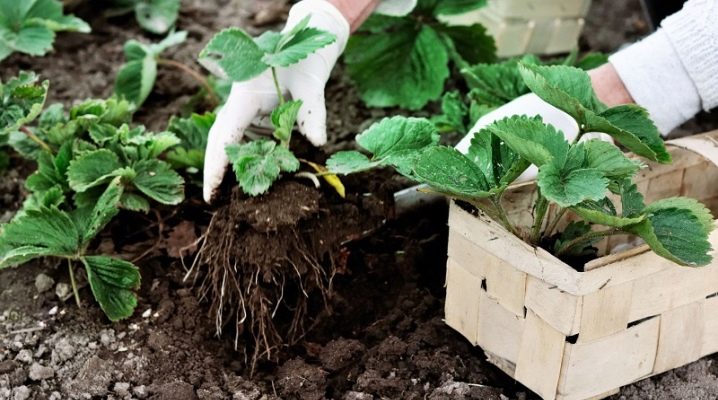
Strawberries and strawberries are delicious berries. They are perennial crops, but nevertheless, new plantations appear every 3-4 years, since during this time the bushes become weaker and give a minimum yield.
Usually these berries are planted in autumn. In this article, we will take a closer look at the features and rules of planting strawberries and strawberries in the fall, the advantages and disadvantages, the main methods, common mistakes and tips.
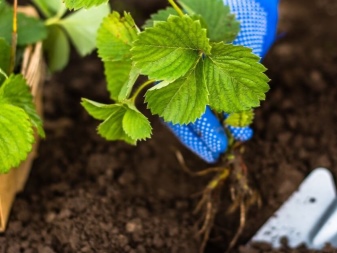

Advantages and disadvantages
It is customary to plant strawberries and strawberries twice a year: in spring and autumn. Many experienced gardeners perform the procedure in the fall. Often in cold regions (in the North), early frosts do not allow the bushes to take root, they freeze out, which must be taken into account when choosing a time interval.
However, planting strawberries and strawberries in the fall has the following benefits:
- a long time period can be allocated for the placement of seedlings - usually at the beginning of September the main work on the site is already completed, you can devote enough time to preparing the beds, planting strawberries or strawberries, as well as their further care;
- a large amount of planting material - over the summer, many outlets are formed on the site, among which you can easily choose large and healthy ones for further breeding;
- suitable weather conditions - at the end of summer, warm weather usually prevails and there is regular precipitation, in such conditions strawberries and strawberries take root well;
- after the autumn planting, the first harvest will appear in the spring, but after the spring transplant, it will be necessary to wait a whole year for the berries to form;
- usually in the fall, a large assortment of strawberry and strawberry seedlings is on sale, you can find even the rarest varieties, in addition, in the spring there is a high probability of purchasing old seedlings;
- the cost of autumn seedlings is usually cheaper than spring ones;
- autumn weather promotes favorable transportation of strawberry and wild strawberry seedlings.
In addition to the above advantages, planting strawberries or strawberries in the fall also has disadvantages. There is a good chance that the seedlings will not take root as the weather is unstable in many regions.
Quite early, the air temperature can drop to subzero temperatures. It is desirable that frosts come no earlier than a month after planting the plants in the soil.
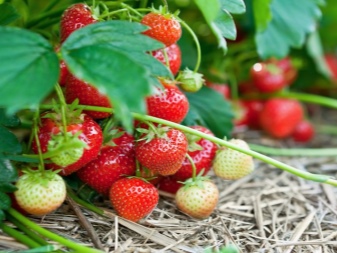
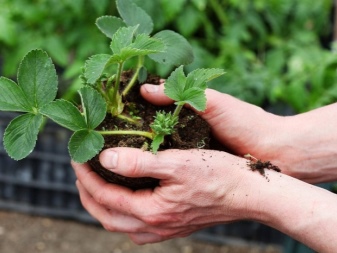
Timing
Both strawberries and strawberries are non-capricious plants, since even with minimal care they produce a crop. To get large berries, you need to recreate favorable conditions, then the number of berries will pleasantly surprise. Initially, you should build on the weather and local climate. On average, the following planting periods are distinguished:
- early - begins in summer and ends at the end of September;
- medium - lasts from the end of September to the end of October;
- late - it can be carried out 1 month before frost.
Experienced gardeners usually prefer early or mid-planting strawberries or strawberries. It is better not to delay until the last, because the bushes may not have time to take root until frost. Usually, after the influence of frost, the yield decreases significantly.
It is recommended to plant strawberries and strawberries under the following conditions:
- air temperature from +10 degrees;
- It's a nasty day;
- after lunch.
Important! In hot weather, it is strictly forbidden to plant strawberries, since the chances of rooting are minimal.


In order to choose the right time for planting berries, experienced gardeners pay attention to the growing season of the crop. Usually the whiskers appear in June, in the next two months they take root, and only in the fall do fruit buds form. Taking into account the peculiarities of the climate and vegetative characteristics, it will be possible to choose the optimal planting time for strawberries. We list the landing dates depending on the regions:
- in the suburbs and the Moscow region, it is better to carry out work in the last month of summer or in the first autumn;
- in the Leningrad region, the time comes from mid-August to early autumn;
- in central Russia, the time shifts slightly: end of August - first half of September;
- in the Urals, you can start landing much earlier: end of July - first half of August;
- in Siberia, for example in Omsk, work can be carried out until the end of August;
- in Rostov and Krasnodar regions, Crimea, it is recommended to focus on the month of September or October.
Some gardeners plant according to the lunar calendar. This option also has a right to exist, because with its help, garden strawberries will take root better, and will give a good harvest in the coming year. You should pay attention to the following landing dates according to the lunar calendar:
- August: forbidden days - 3, 19, favorable - 1–2, 5–7, 11–12, 15–16, 22–25, 28–29;
- September: prohibited days - 2.17, favorable - 3, 6-8, 11-13, 20-25, 29-30;
- October: forbidden - 2.15, 16, 31, favorable - 1, 2, 3, 4, 5, 10, 11, 29.

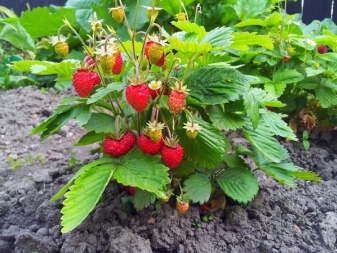
Sapling selection
Gardeners recommend purchasing strawberries and strawberries exclusively from trusted manufacturers, it is better to pay attention to nurseries. It is strongly advised not to contact private owners, since it is impossible to trace which plant is offered, because it may be weak or infected.
The best choice is seedlings from mother bushes, since they have good immunity, and are also characterized by high yields. To choose the right seedlings for planting, you need to pay attention to the following signs:
- healthy and dense horns, which have a thickness of 7 mm;
- bright green dense leaf plate;
- the number of leaves exceeds 5;
- branched and living roots, while their length should be from 8 cm;
- healthy appearance, no damage or signs of infection.
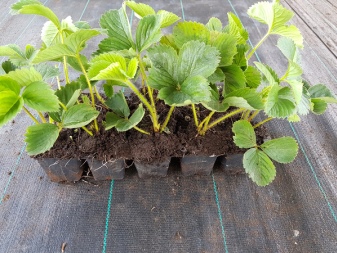
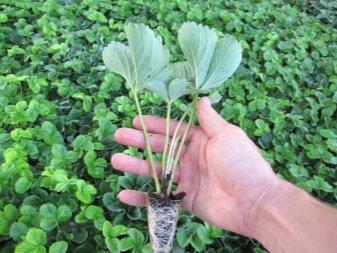
Seat selection
The soil is of great importance, especially its composition. Fertile soil is the best solution for planting the crops in question. It is worth paying attention to indicators such as: acidity - 5–5.6 units, groundwater level - no more than 60 cm. Before planting, the land must be dug up, while special attention should be paid to the presence of larvae of harmful insects, for example: the Colorado potato beetle or wireworm. If they are present, the soil needs additional processing. Alternatively, you can use ammonium nitrate or a solution of the drug "Marshal", "Confidor" or "Bazudin".
Soil with low acidity can be used, but preparation should be started no earlier than 1 year in advance. When digging, about 6 kg of lime is added to the soil per 1 square meter. The digging depth should correspond to the length of the shovel bayonet. In addition, 10 kg of humus or rotted manure, 15 grams of potassium chloride and 30 grams of superphosphate are still required per 1 square meter.
Important! Before planting, you need to loosen the soil to a depth of 10-15 cm.
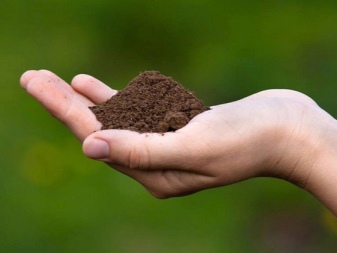
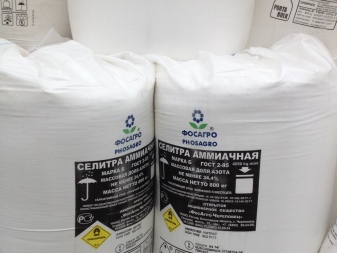
Methods
After preparing the seedlings and the place, it is necessary to proceed to the choice of the planting method. Usually, the selection of the layout is influenced by the availability of free places on the site, as well as the goals on the basis of which the cultivation of strawberries and strawberries will be made. There are several ways to plant seedlings.
- Carpet... This option implies planting seedlings in the form of a solid carpet. Usually a distance of 25 cm is maintained between plants.
- Gnezdovoy... Such a planting is the arrangement of six bushes around one main one, while maintaining a distance of 30 cm. The nests should be located at a distance of at least 45 cm. This method is chosen by many gardeners who plan to propagate strawberries or strawberries in the future.
- Private... This option implies the presence of beds. Usually it is used for large plantations, because it is ideal for planting on agrofibre. The distance between the rows should be from 40 to 70 cm, between the seedlings - from 20 cm. These indicators can vary - you need to start from the growth of the variety.
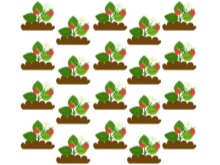

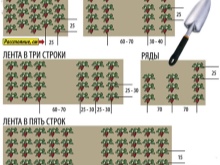
Preparation of soil and planting material
Some gardeners are cultivating strawberries or strawberries in the greenhouse, although in this case there is a high probability of getting a watery berry due to the lack of organic fertilizers. It is better to plant in open ground, while it must be pre-fertilized. If you prepare the ground correctly, then a good harvest of berries will pleasantly surprise you.
To prepare the garden for planting, it is recommended to take into account the following recommendations:
- about 1 month before planting seedlings, it is necessary to dig up the bed, adhering to a depth of 30 cm;
- it is imperative to fertilize the soil using one of several options: 10 kg of humus and 2 glasses of ash; 2 tablespoons of nitrophosphate or 1 tablespoon of potassium salt, 50 grams of urea, 50 grams of superphosphate and 1 bucket of compost;
- if various pests are found in the soil, the soil should be treated - disinfected with the help of "Marshal" or "Confidor";
- initially you need to make an elevated bed (25 cm), and then - after fertilizing - it can be leveled using a rake.
Planting material is also prepared in a certain way:
- preparation should be started about a week before planting;
- seedlings should be cut off the roots so that their length is no more than 10 cm;
- to prevent the spread of fungal infection, it is necessary to treat the roots with antifungal drugs;
- seedlings should be left in a cool and dark place, but before that, sprinkle with earth so that it does not stick;
- about an hour before planting, the plants are moistened;
- extra leaves must be removed, normally about 4–5 leaves should remain.
Important! If the berries are watery and tasteless, it means that strawberries or strawberries are fed with mineral fertilizers. It is recommended to add organic matter.
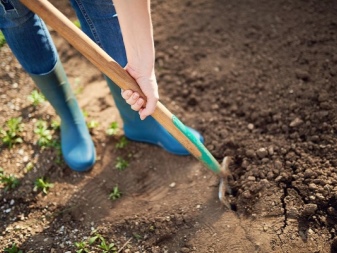

How to plant correctly?
Gardeners recommend planting strawberries or strawberries in cloudy weather or in the evening. First, you should make the beds with a hoe, after pulling the cord evenly. Further, the furrows must be thoroughly moistened with water. It is worth maintaining a distance of 60–80 cm between them, between the bushes it should be about 15–20 cm. If all of the above rules are followed, strawberries will overwinter well and will yield a rich harvest in the future. The root system should be treated with a clay puffer, which perfectly protects it from drying out and promotes rapid rooting. Then the roots are dipped into the soil and closed up, while the hearts remain outside. The soil must be pressed for reliability and peat or humus added.
You can plant the berry crops in question in the country in the fall with a mustache in open ground. You can prepare your own seedlings. Many people prefer the Victoria variety. It will take bushes that are already 2 years old, but they have produced a small amount of berries this year. You should dig 2-4 antennae into cups, wait for rooting and pinch them off. Before planting, the seedlings will already have fairly strong roots. Then the landing is carried out in the above described way. Some gardeners prefer to plant strawberries or strawberries on agrofibre. This option allows you to increase yields and reduce labor costs for plant care. Black covering material (agrofibre) helps to protect strawberries from weeds, snow, rainfall, drought and so on. This material is environmentally friendly, excellent air permeability and is characterized by water permeability.
If you decide to plant strawberries on agrofibre, you need to adhere to the following algorithm:
- decide on the width of the covering material, since its dimensions will affect the location of the beds: it is advisable to use a solid element, but if you need to connect two parts, then an overlay is made to avoid the possible appearance of gaps;
- the soil should be dug up and fertilized, if necessary, it can be deoxidized;
- the beds are covered with agrofibre, and pegs, bars, hairpins and so on are used for fixing;
- taking into account the scheme of planting bushes, you need to make a chalk mark on the material, in the future you will need to make cuts in the form of a cross in order to plant.
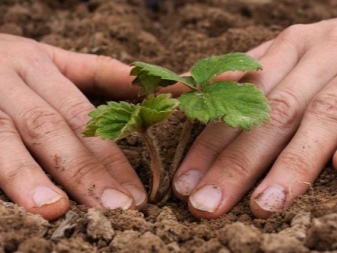
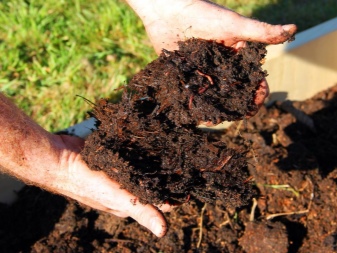
Follow-up care
Planting strawberries or strawberries correctly is only half the battle. It is very important to arrange for proper follow-up care for the plants to take root. Required: proper watering, soil cultivation both between rows and under bushes, as well as protection from cold weather, since the winter season is ahead.
It is recommended to water the strawberries frequently only for the first week, irrigating every 2-3 days. It is better to do this in the morning to protect the leaves from burns, which are possible with daytime watering. Drip irrigation is recommended as it is metered. Within a week after planting, the bushes take root and do not need a lot of water. If the soil was properly fertilized before planting, then strawberries do not need additional fertilizing for several years. In the future, plants will need organic matter. You can use chicken manure, which is diluted with water in a ratio of 1: 15. The prepared solution should be infused for two days, and then spilled between the bushes along the grooves.
In addition, strawberries and strawberries need protective measures against harmful microorganisms. For processing, a solution of "Karbofos" is suitable, with which the bushes are watered around, having previously loosened the soil 8 cm deep. To prepare the solution, it is recommended to take water heated to +30 degrees. After watering, the beds are covered with foil for several hours.
Folk remedies are also quite effective, for example: herbal and tobacco infusions, laundry soap.
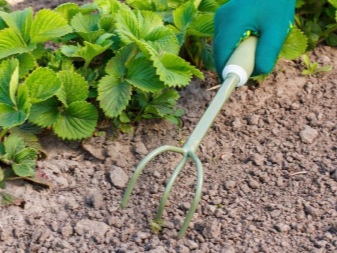

Common mistakes
The following mistakes are often made by gardeners.
- Bad seedlings. The quality of the seedlings affects the survival rate, development and further harvest. The roots must be strong, moist, thick petioles, 3-5 leaves must be present.
- Loose root system. It is necessary to properly spread the roots when planting, then the survival rate will be higher, and their further development. Long roots can be trimmed down to 7 cm for easier handling. When creating a hole, you need to make one sheer wall. The roots are pressed against the wall and placed freely.
Useful Tips
If you choose the right time for planting strawberries and strawberries, then in the spring there will be a fairly early and abundant harvest of berries. When choosing these dates, it is recommended to take into account the region and the weather. If everything is chosen correctly, then strawberries withstand the attacks of harmful insects more steadfastly.
Strawberries are characterized by unpretentiousness, but improperly selected soil will negatively affect its development: it will start to hurt often, the berries will be small, and sometimes the plants even die. A month before planting, it is already worth starting soil preparation.
Clay, peat, sandy and sod-podzolic lands should be avoided. And in wetlands, plants do not even take root.
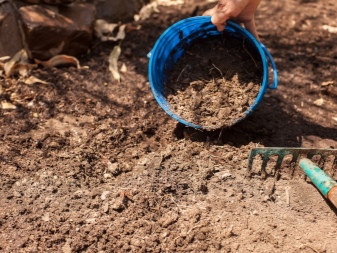
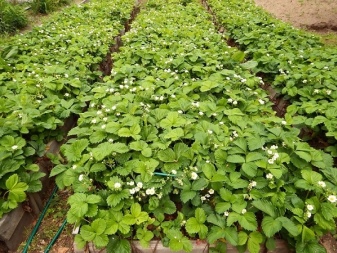













The comment was sent successfully.